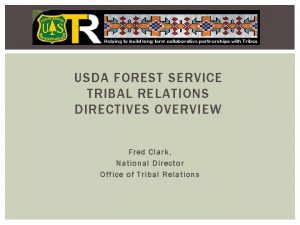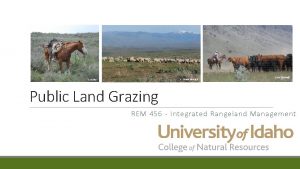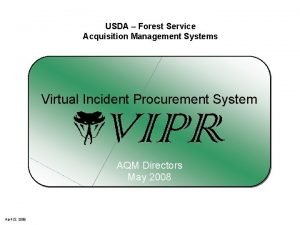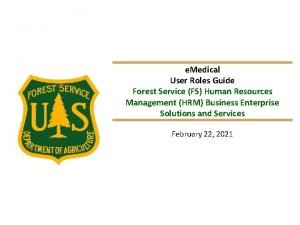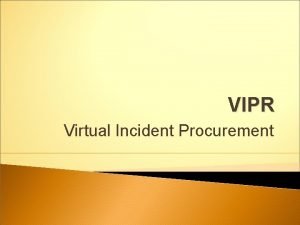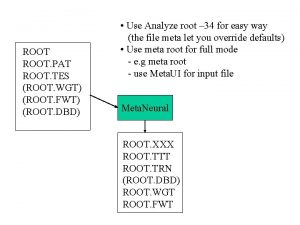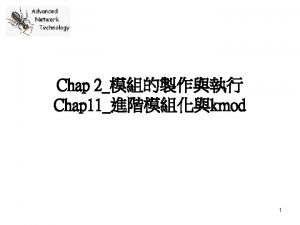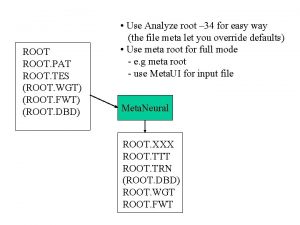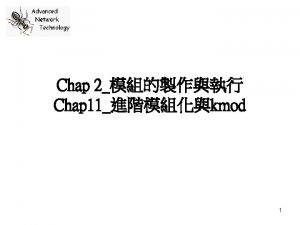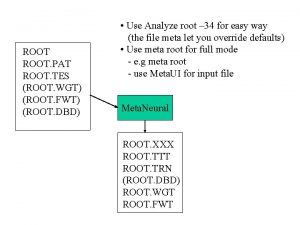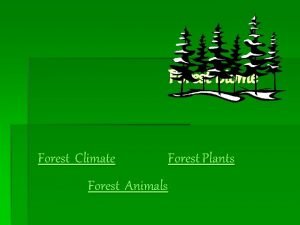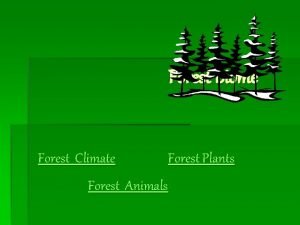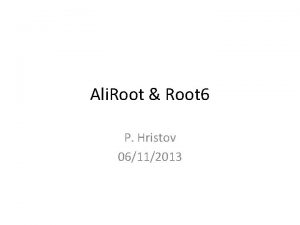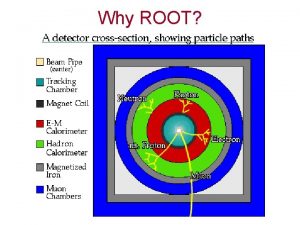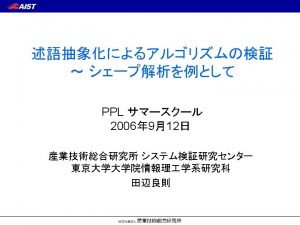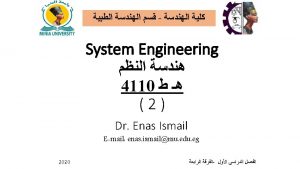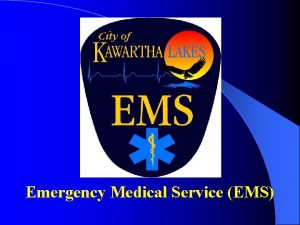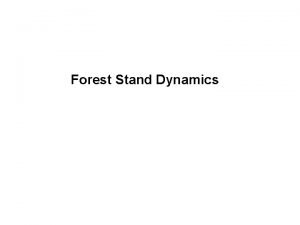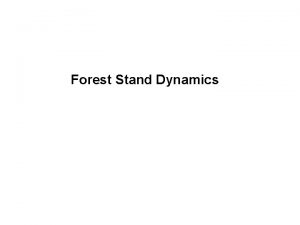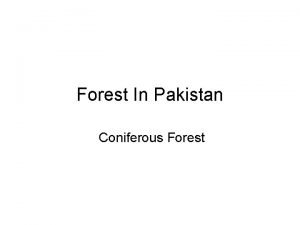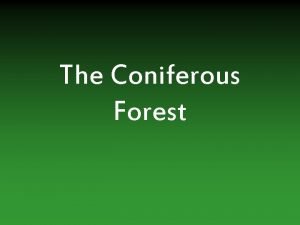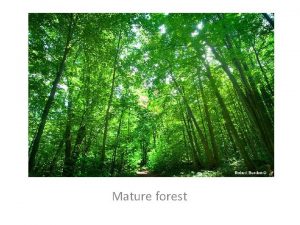EMS Takes Root Takes in the Forest Service





















- Slides: 21

EMS Takes Root Takes in the Forest Service in Sarah H. Baker, P. E. EMS Program Manager, Southwestern Region, USDA Forest Service Federal Environmental Symposium East 2009

EMS in the Forest Service • Where we are • How we got here • What we’re doing now • What’s next

Where we are • June 2008 - USDA Forest Service rolled out a national EMS framework • Implemented on 142 Units • 153 EMS Representatives for more than 30, 000 employees • Completed 1 st round of audits • Completed Unit Management Reviews in 2008

Where we are • Completed National Management Review in April 2009 • The Chief declared EMS implemented • Rolled out updated EMS May 1, 2009

Where we are • First significant environmental aspect: Petroleum-based fuel reduction through Fleet Management • In 2007: – Spent $30, 000 on 11, 000 gallons of fuel to drive 138, 000 miles • In 2008, reduced FS-owned fleet fuel consumption almost 2%

How we got here Program Mission Areas: • National Forest System • Forest Service Research • State & Private Forestry • Administration • International Forestry

How we got here National Forest System structure: • Washington Office Chief’s Office, including detached units (T&D, Admin, etc. ) • Regions 9 Regions in 44 States • National Forests 155 National Forests and 20 Grasslands managing 193 million acres • Ranger Districts >600 Ranger Districts

How we got here • Research & Development – 5 Research Stations with more than 2000 employees in 100 locations • Business Operations – includes Albuquerque Service Center, Chief Information Officer, 22 Job Corps Centers, and more with more than 3000 employees • State & Private Forestry – provides forest management assistance to other landholders (states, tribal, communities and private) with more than 400 employees • International Programs – addressing forest-related issues globally with more than 50 employees

How we got here EO 13423 – Energy, water, fuel, green purchasing, green construction, and pollution prevention goals 2008 Planning Rule – Land Management Aspects

What we’re doing now Significant Environmental Aspects: 1. Fleet Management – Updated operational controls – Struggling with data challenges 2. Vegetation Management

Vegetation Management Activity: Mechanical Vegetation Treatments using Heavy Equipment (timber harvest, mechanical fuels treatment, wildlife habitat treatment; commercial timber sales, stewardship contracts, service contracts, force account work) Impact: Project specific environmental impacts (effects on water, soil, vegetation including invasive plants, wildlife, etc. )

Vegetation Management Operational Controls: 1. Land management plan (LMP) direction used to design the project? 2. Were any mitigation measures identified through the NEPA analysis? Were any overlooked? 3. Were the mitigation measures incorporated into the project documents? 4. Were the mitigation measures implemented on the ground and monitored? EMS monitoring also reviews implementation of design features such as the density of trees left in the project area, stream corridors, reseeding of temporary roads, and installation of waterbars.

Vegetation Management Why Environmental Impacts of Mechanical Vegetation Treatments using Heavy Equipment? – – on all national forests and grasslands significant potential for adverse environmental impacts – existing procedures for EMS framework Examples of projects: – timber sale to provide habitat and increase presence of oaks in the forest – fuels treatment project (thinning) to reduce the risk of wildfire

What we’re doing now Objectives and Targets: • Energy conservation • Water conservation • Renewable energy • Green buildings • Green purchasing • Pollution prevention • Electronics management

What we’re doing now • Enviromental compliance program – Integrating established program • Environmental emergency response – Focused on first response by employees – Cutting across traditional work divisions • Training & Communication – Giving every employee “EMS 101” – Communicating with permittees, volunteers, contractors, etc.

What we’re doing now Working on barriers and obstacles – Record-keeping for 30, 000+ employees – Baseline data for EO 13423 reporting and EMS monitoring – Cutting across traditional staff boundaries – Maintaining leadership support and focus – Understanding how EMS can provide a framework for Climate Change efforts – Explaining that EMS is a tool and not a program

What we’re doing now Directly involving employees • EMS Unit Reps • Auditoring • Monitoring Tying in with Green Team efforts • Fleet Transportation • Energy & water conservation GHG reduction • Waste reduction Recycling programs

What’s next • Working to align EMS cycle more closely with FY cycle • Focused on “Finding Notices” • Working closely with Green Teams and Sustainable Operations Teams to address energy and water conservation • Operations team focused on refining baseline data measurement and reporting

What’s next • Developing implementation plan for energy and water conservation as possible 2010 significant environmental aspects • Refining implementation plan and operational controls for Vegetation Management aspect for possible implementation on all forests in 2010

What’s next Continue with national audit program Refine and test environmental emergency reponse Unit Management Reviews Regional Management Reviews National Management Review Continual Improvement!

Questions?
 Forest service directives
Forest service directives Us forest service
Us forest service Vipr forest service
Vipr forest service Connect hr forest service
Connect hr forest service Vipr dpl
Vipr dpl Test del escalon del forest service
Test del escalon del forest service Hát kết hợp bộ gõ cơ thể
Hát kết hợp bộ gõ cơ thể Slidetodoc
Slidetodoc Bổ thể
Bổ thể Tỉ lệ cơ thể trẻ em
Tỉ lệ cơ thể trẻ em Chó sói
Chó sói Tư thế worms-breton
Tư thế worms-breton Bài hát chúa yêu trần thế alleluia
Bài hát chúa yêu trần thế alleluia Môn thể thao bắt đầu bằng từ chạy
Môn thể thao bắt đầu bằng từ chạy Thế nào là hệ số cao nhất
Thế nào là hệ số cao nhất Các châu lục và đại dương trên thế giới
Các châu lục và đại dương trên thế giới Công thức tính độ biến thiên đông lượng
Công thức tính độ biến thiên đông lượng Trời xanh đây là của chúng ta thể thơ
Trời xanh đây là của chúng ta thể thơ Mật thư anh em như thể tay chân
Mật thư anh em như thể tay chân Làm thế nào để 102-1=99
Làm thế nào để 102-1=99 Phản ứng thế ankan
Phản ứng thế ankan Các châu lục và đại dương trên thế giới
Các châu lục và đại dương trên thế giới
